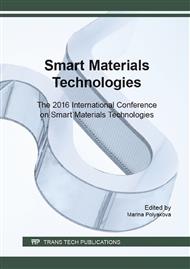p.39
p.43
p.48
p.53
p.61
p.66
p.71
p.77
p.87
Surface Morphology and Corrosion Behavior in Nano PMEDM
Abstract:
This research study was conducted to investigate the effect of nanoaluminum powder mixed electrical discharge machining (PMEDM) on surface morphology and corrosion rate of titanium alloy material. The development of devices such as implants in biomedical engineering application nowadays requires materials having good mechanical and physical properties. Conventional machining process of titanium as implant is a challenge resulting relative poor surface quality. Even using electrical discharge machining (EDM) which is non-conventional machining process there are limitations including machined surface alteration with relative poor machined surface quality, low corrosion resistance and. PMEDM is hypothesized to address the above mentioned problems. In this study, PMEDM on titanium alloy using nanoaluminum powder and copper-tungsten electrode was assessed to investigate the improvement for implant application. Process parameters used are peak-current, ON-time, gap voltage and powder concentration. Surface morphology and average corrosion arte are selected output responses. Results showed that Surface morphology of PMEDM machined surface is significantly improved. PMEDM marginally enhanced corrosion rate of biomedical grade titanium alloy.
Info:
Periodical:
Pages:
61-65
Citation:
Online since:
December 2016
Keywords:
Price:
Сopyright:
© 2017 Trans Tech Publications Ltd. All Rights Reserved
Share:
Citation:


